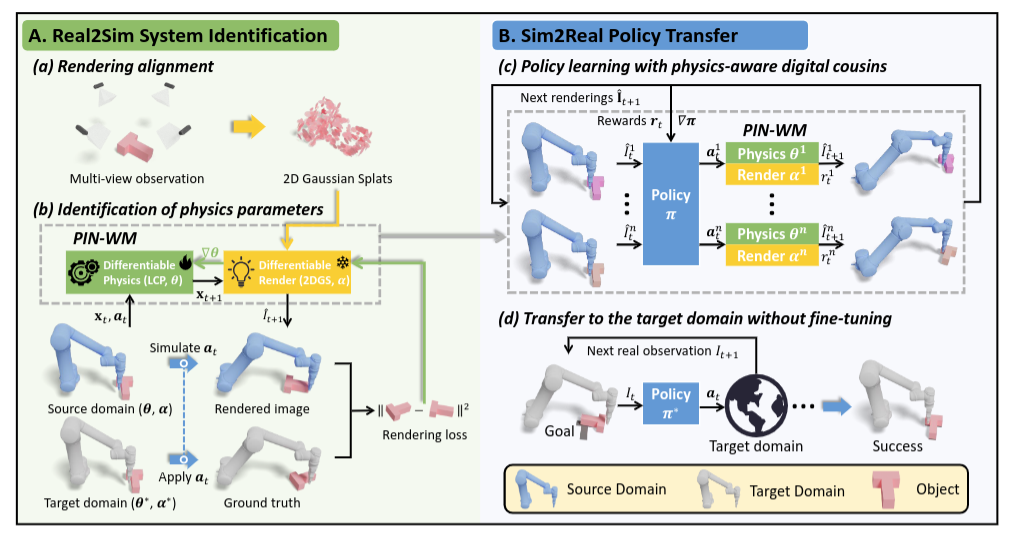PIN-WM : Learning Physics-INformed World Models for Non-Prehensile Manipulation
Push object on a slippery plane
Push object on a rough plane
Flip object on a rough plane
Other results
Abstract
While non-prehensile manipulation (e.g., controlled
pushing/poking) constitutes a foundational robotic skill, its learning
remains challenging due to the high sensitivity to complex
physical interactions involving friction and restitution.
To achieve robust policy learning and generalization, we opt to learn a
world model of the 3D rigid body dynamics involved in non-
prehensile manipulations and use it for model-based reinforcement learning.
We propose PIN-WM, a Physics-INformed World
Model that enables efficient end-to-end identification of a 3D
rigid body dynamical system from visual observations. Adopting
differentiable physics simulation, PIN-WM can be learned with
only few-shot and task-agnostic physical interaction trajectories.
Further, PIN-WM is learned with observational loss induced
by Gaussian Splatting without needing state estimation. To
bridge Sim2Real gaps, we turn the learned PIN-WM into a
group of Digital Cousins via physics-aware perturbations which
perturb physics and rendering parameters to generate diverse
and meaningful variations of the PIN-WM.
Extensive evaluations
on both simulation and real-world tests demonstrate that PIN-
WM, enhanced with physics-aware digital cousins, facilitates
learning robust non-prehensile manipulation skills with Sim2Real
transfer, surpassing the Real2Sim2Real state-of-the-arts.
BibTeX
@article{li2025pin,
title={PIN-WM: Learning Physics-INformed World Models for Non-Prehensile Manipulation},
author={Li, Wenxuan and Zhao, Hang and Yu, Zhiyuan and Du, Yu and Zou, Qin and Hu, Ruizhen and Xu, Kai},
journal={arXiv preprint arXiv:2504.16693},
year={2025}
}